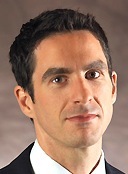
MassMutual buys tool that shows impact of low savings rates on employers’ bottom lines
MassMutual has purchased the assets of Viability Advisory Group, including “a patent-pending analysis program to help companies evaluate the financial costs associated with employees being unprepared for retirement and the loss of productivity attributed to employees’ lack of financial security,” according to a release.
Hugh O’Toole founded Viability when he left MassMutual Retirement Services in April 2014 after seven years. As part of the acquisition, he will rejoin MassMutual to run the Viability business. Terms of the acquisition were not disclosed.
The insurer called the acquisition “part of a strategy to help financial advisors quantify the value of employee retirement readiness and appropriate benefits plans use to employers’ bottom lines.” The Viability program “calculates the hard-dollar cost of inappropriate or under-utilization of retirement savings and other employee benefits programs,” the release said.
The Viability suite of tools will be offered to MassMutual retirement plans and worksite insurance clients strictly through financial advisors, according to Eric Wietsma, head of Sales and Distribution for MassMutual Retirement Services. The new offering is designed to enhance retirement advisors’ practices and increase their value to employers.
“We believe it’s necessary for employers to engage a financial advisor when making today’s high-stakes benefits decisions,” Wietsma said. “Viability helps advisors demonstrate the economic value of their insights and guidance to their customers.”
Retirement readiness and financial wellness have become a growing concern of employers. Aging employee populations are more expensive for employers while employees’ personal financial problems are eroding workplace productivity.
Every day, approximately 8,000 Americans reach age 65, according to the U.S. Census Bureau. While 65 is the traditional retirement age, eight in 10 workers say they plan to delay retirement, the Employee Benefits Research Institute reports, and one in 10 say they expect never to retire.
One in four employees say personal financial problems have become a distraction at work, according to a 2014 survey of financial wellness issues conducted by PricewaterhouseCoopers. Money issues have consistently topped Americans’ list of biggest stressors since 2007, the American Psychological Association reports.
‘Family offices’ know what the ultra-wealthy want: Cerulli
Multi-family offices and wirehouse advisory teams have realized that HNW and UHNW investors require lots of complementary services, and this recognition has propelled some of them to “elite status, “ according to global analytics firm Cerulli Associates.
“As a channel, MFOs have not only adapted the best, but that they have also moved well ahead of their primary competitors—including the wirehouses—in many key aspects,” said Cerulli associate director Donnie Ethier.
“Other one-time market leaders are left somewhat disoriented and struggling to keep up” while “other firms determined that their expertise and resources are best suited for less wealthy investors.”
Ethier wrote Cerulli’s latest report, High-Net-Worth and Ultra-High-Net-Worth Markets 2015: Understanding and Addressing Family Offices. It focuses on the unique aspects of advising HNW and UHNW families, including their attitudes and behaviors regarding wealth managers.
The report also examines vehicle use, fees, and services provided by wealth managers in family offices, wirehouses, banks, direct providers, and RIAs.
“The industry-wide leaders by assets, the wirehouses, have generally acclimated; however, MFOs will continue to advance and threaten longtime grasps of HNW and UHNW families,” Ethier wrote.
“The wirehouses have encouraged the majority of their advisory teams to focus on clients possessing a minimum of $250,000, which has resulted in advisor productivity that is unrivaled by their largest scalable competitors, the banks. Many private banks continue to set asset minimums at $2 million to $10 million, with family-office services beginning at $25 million to $100 million; still, even these elite global brands are battling larger trends.”
MFOs may never overthrow the wirehouses’ and banks’ rule over the broad HNW market, the report said, but the past and future gains will certainly shift marketshare. If the traditional leaders do not adapt to larger consumer and advisor trends, projections that favor growth of MFOs could actually prove conservative.
“Providing asset management searches, selections, and asset allocation are, for all intents and purposes, no longer the greatest competitive advantage in the HNW and UHNW marketplaces,” continued Ethier.
What is the purpose of money, Thrivent asks
Sixty-one percent of Americans said they would “rather be called generous than financially successful” and more than one-third think that “the purpose of the money they make is to give back,” according to Thrivent Financial’s inaugural 2015 Money Mindset Report.
But the report also found that most Americans, at every income level, lack long-term financial strategies, advice and tools, and many are financially unprepared for the future.
Only 27% of Americans are very confident they are making the right decisions with their money and 27% say they live above their financial means. Thrivent partnered with Wakefield Research for the 2015 Money Mindset Report. It is based on a survey of 1,001 U.S. adults ages 18+ conducted last July.
Millennials: On the cusp of big financial decisions
Using primitive but proven genetic replication technology that was readily at hand, the BabyBoomers cloned themselves in the 1980s and 1990s, thus producing the 77 million 18- to 34-year-olds collectively tagged as “Millennials.”
(Marketing gurus don’t seem to talk much about the Boomers anymore. It’s all about the Millennials and their mobile electronic devices.
Millennials now constitute the largest age cohort in the United States today, according to the latest edition of MacroMonitor, a regular demographic report from Strategic Business Insights. But only 25% of all US households are headed by people who identify as Millennials.
That’s probably because “coming of age during difficult economic times constrains the ability of many Millennials to form their own independent households,” the report said.
Of the Millennials who have formed households, 18.4 million households still have no children and another 11.8 million have dependent children ages 12 or younger, leading SBI to conclude that most Millennials “have the majority of their financial goals still ahead: career, home and family.”
“In the next 10 to 15 years, Millennials’ need for most financial products and services will be high—especially for credit and protection from income loss,” the report said. “To achieve their financial goals (such as a home purchase, funding children’s educations, and successful retirement), they need to implement savings and investment strategies early; time is the most important resource Millennials’ have to achieve their goals.”
Affluent Millennials, not surprisingly, tend to be more satisfied with their household’s financial situation and are more likely to have a financial plan than non-affluent Millennials. Affluent Millennials also feel confident “they are on track to meet their goals.”
Because Millennials are relatively less trustful of financial providers and intermediaries, winning them over will take awhile. About one-third of Millennial households (those with incomes between $50K and $100K) are viable targets for financial-services providers, SBI said. They have enough cash flow to save and invest and their needs and assets will grow as they mature. The same is true for 38% of non-affluent Millennial households.
3Q2015 U.S pension buy-out sales again top $3 billion: LIMRA
In the third quarter of 2015 U.S. group pension buy-out sales reached $3.2 billion, according to a LIMRA Secure Retirement Institute sales survey. Following second quarter sales of $3.8 billion, this marks the first time consecutive quarters experienced $3 billion in sales.
Traditionally, pension buy-out sales tend to spike in the fourth quarter with far less activity in the first three quarters. In 2015, however, pension buy-out sales have eclipsed $8 billion for the first nine months of the year. This represents a 415% increase over the $1.53 billion in sales for the first nine months of 2014.
“For the last five years the number of pension buy-out contracts sold in the first three quarters has steadily increased,” said Michael Ericson, research analyst for LIMRA Secure Retirement Institute. “We’ve seen 195 new contracts so far in 2015, compared to 159 contracts in the first nine months of 2014.”
While the trends show more small and medium sized companies seeking pension buy-outs, a single “jumbo” deal by a corporate giant can significantly influence sales. For a recent example, Kimberly-Clark’s pension conversion in June contributed to the $3.8 billion quarterly sales — a record for second quarter sales.
Years of low interest rates and increasing premiums charged by the Pension Benefit Guarantee Corporation has compelled more organizations to consider transferring their pension risk to a group annuity. To date, 13 financial services companies provide group annuity contracts for this market.
“Fourth quarter usually sees a large increase in pension buy-out sales,” said Ericson. “Based on our tracking, we think fourth quarter and full-year sales in 2015 will finish strong.” LIMRA Secure Retirement Institute publishes the Group Annuity Risk Transfer Survey every quarter.
© 2015 RIJ Publishing LLC. All rights reserved.





 compensation that they offer distributors and agents to get them to sell their products, typically indexed annuities. Only two of the manufacturers offer no prizes; the other 13 listed their Bahamian golf outings, Tag Heuer watches and other premiums.
compensation that they offer distributors and agents to get them to sell their products, typically indexed annuities. Only two of the manufacturers offer no prizes; the other 13 listed their Bahamian golf outings, Tag Heuer watches and other premiums.







